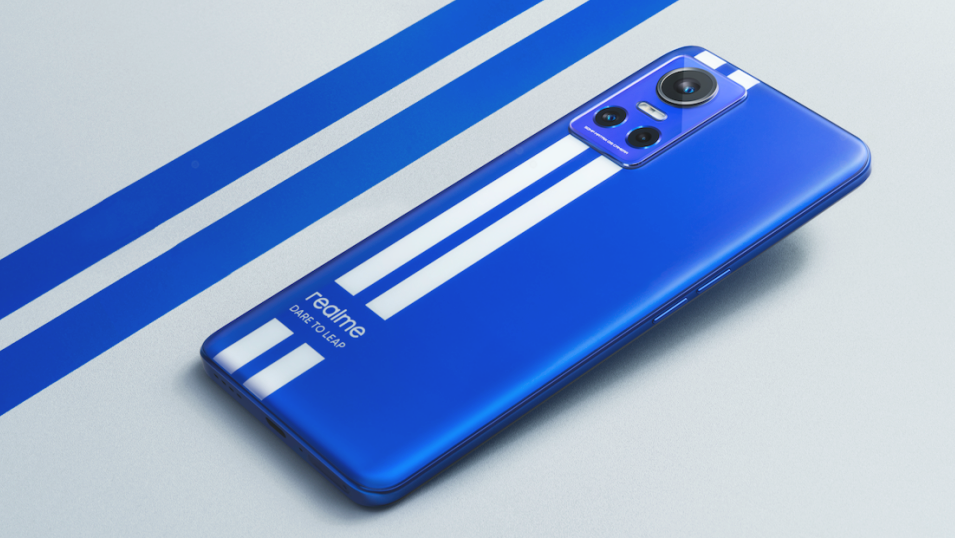This new Realme phone is everything I want in a mobile - except I won't buy it
A check-list of my favorite features

I often see new Android phones launched in China that I wish I could test - these often have novel designs, flashy features, and incredible cameras, but rarely do they launch outside Asia.
That's okay, though, because they're usually so top-end that I'd never be able to afford them. However a new Realme phone has been announced that I'd absolutely consider if it went on sale everywhere else - and that's a very rare stance for me to take.
This is the Realme GT Neo 3, which was teased earlier in the year - it's the follow-up to the GT Neo 2, which I tested out, but since that didn't go on sale in many regions we never did a full review. That's why I expect the GT Neo 3 will be hard to buy.
But the GT Neo 3 ticks so many of my 'must-buy boxes' that I can't help but get excited.
Great budget features that have caught my eye
Affordable price: ✔️
Great main camera: ✔️
Fast charging: ✔️
Interesting design: ✔️
Small or medium size: ❌
The flagship feature of the Realme GT Neo 3 is that it charges at 150W, which is the fastest we've seen in any smartphone so far. Realme states that the phone will power to 50% in just five minutes, which means it'll go all the way to full in the time it takes me to make my morning toast.
I love fast charging phones - I'm always forgetting to power my device until five minutes before I'm out the door, so the ability to get loads of juice at a moment's notice is fantastic.
Another feature I love here is the main camera, which is a snapper using Sony's 50MP IMX766 sensor. I tested this on the Realme 9 Pro Plus and found it fantastic - I'd go so far as to say it's one of the best sensors available to mobile manufacturers right now.
Sign up for breaking news, reviews, opinion, top tech deals, and more.
This Sony Exmor sensor is big, so it's great for low-light and night photography. With the Pro Plus, I was taking iPhone-quality night shots on an affordable Android. The size also makes pictures bright and colorful - now, when I see a phone has this camera, I'm always excited to test it out.
This is another Realme GT phone to continue the brand's tradition of quirky designs, this time bringing back the racing-strip style from the original Realme GT and the Neo 2. Those were yellow and green respectively but it's a blue mobile here - as you probably already know from the picture.
#realmeGTNEO3 leads 50% battery capacity comeback in just 5 mins. What else can you do in 5 minutes? pic.twitter.com/BueeO4ObusMarch 22, 2022
I'm a big fan of affordable phones - my three favorite mobiles that I've ever tested, the Xiaomi Mi Note 10, Motorola Edge, and Realme GT, were all mid-range or budget devices, and I think these market tiers are far more interesting and competitive than the premium one.
Well, the Realme GT Neo 3 costs just RMB 2,699 - that converts to roughly $420 / £320 / AU$570. There's also a version with 80W charging that's RMB 1,999, which is about $320, £240, AU$430 - it feels weird turning my nose up at 80W charging, but when 150W is on the table, it's okay.
That price would make the GT Neo 3 cost just half the price of the Samsung Galaxy S22, for a phone with a bigger screen, cooler design, and faster charging. Great, nice and affordable - I love it.
If I had one note for the Neo 3, it'd be the screen size - while at 6.7 inches it'd be great for gaming or watching movies, I like my cute little easily-holdable compact phones, or at least ones that hover around 6.2-6.4 inches.
There's other stuff about the phone which sounds cool too - it has the Dimensity 8100 chipset, which sounds like an impressive mid-range chip, and the screen is AMOLED with a 120Hz refresh rate.
According to Realme, the phone is coming to Europe "very soon" but I personally don't expect it to come to the UK, where I live - and even if it does, I don't imagine the 150W version of the phone will.
I'll happily be surprised if the thing shows up in my lap. I'm not holding my breath, but either way, this sounds like a cool device.

Tom Bedford joined TechRadar in early 2019 as a staff writer, and left the team as deputy phones editor in late 2022 to work for entertainment site (and TR sister-site) What To Watch. He continues to contribute on a freelance basis for several sections including phones, audio and fitness.